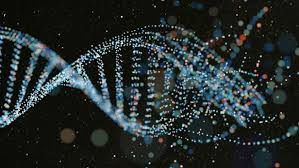It's William James's Varieties of Religious Experience in the first segment of our weekly three-hour session, and then Carl Sagan's Varieties of Scientific Experience after the intermission. Carl collaborated in work with life-partner Ann Druyan, whose idea it was to issue his 1985 Gifford Lectures ("The Search for Who We Are") under a title that pays direct homage to WJ's from the turn of the previous century.
So it's only right, I say, that we should also read and discuss her Cosmos: Possible Worlds, companion book to the latest video sequel to her and Carl's 1980 Cosmos. We should take a moment in class to appreciate the passing of the cosmic baton from Carl to Neil deGrasse Tyson.
Possibility, I said in my introduction, is much of what "experience" means to me. Same goes for all three of our authors. William said "the really vital question for us all is, What is this world going to be? What is life eventually to make of itself? As the late James scholar John McDermott points out, the philosophy and psychology of possibility is central to our vital response.
Carl said it's possible that, if we manage to survive our technological adolescence, we'll expand the human abode beyond this Earth-"the only home we've ever known." Ann says that vision of a bright and soaring human future, and of a truly cosmopolitan human citizenry at home whevever our dreams and ingenuity can take us, was firmly planted in her late husband when he first got a glimpse of the "world of tomorrow" at the 1939 World's Fair.
None of our dreams, and none of the wondrous possible experiences they might engender, can be realized by humans who do not take their own experience seriously. That's WJ's message in the first chapter "Religion and Neurology," where he resists the "medical materialism" of those who dismantle dreams and visions of wondrous possible experience by reducing them to their organic antecedents.
"Medical materialism seems indeed a good appellation for the too simple-minded system of thought which we are considering. Medical materialism finishes up Saint Paul by calling his vision on the road to Damascus a discharging lesion of the occipital cortex, he being an epileptic. It snuffs out Saint Teresa as an hysteric, Saint Francis of Assisi as an hereditary degenerate. George Fox's discontent with the shams of his age, and his pining for spiritual veracity, it treats as a symptom of a disordered colon. Carlyle's organ-tones of misery it accounts for by a gastro-duodenal catarrh. All such mental over-tensions, it says, are, when you come to the bottom of the matter, mere affairs of diathesis (auto-intoxications most probably), due to the perverted action of various glands which physiology will yet discover.
And medical materialism then thinks that the spiritual authority of all such personages is successfully undermined."
Sagan's first chapter, "Nature and Wonder: A Reconnaissance of Heaven," begins to reclaim the possibility of a wondrous and expansive human future by affirming the fitness of our organic nature to generate appropriately cosmic dreams and visions.
Druyan elaborates the affinity between James and Sagan that inspired her to yoke their Gifford lectures with a mirrored title. For both, in their different ways, the respectively religious and scientific experiences of home are profoundly spiritual. Her prologue begins with Carl's romantic feeling for science, and observes that his "pale blue dot is a silent rebuke to the fundamentalist, the nationalist, the militarist, the pollluter--to anyone who does not put above all other things the protection of our little planet and the life that it sustains in the vast cold darkness."
And it is a summons to "a global spiritual awakening...to that soaring experience of the oneness of being fully alive" that she and he consider "a complete experience of nature."
Her first chapter, "Ladder to the Stars," reminds us of the staggering scale of immensity by which we are situated in space and time. She recalls Carl's Cosmic Calendar, according to which "our tiny world coalesce[d] out of the disk of gas and dust surrounding our star" on August 31, and we arrived four "months" later in just the last ticking moments of the cosmic "year"-remarkable!
We'd presumably not be entertaining dreams and visions of personal or species-level possible futures and worlds. Our experience would probably not be complex and varied, our questions would go not much beyond what's for dinner. We'd not be taking up a class on Experience.
Aren't we lucky!


No comments:
Post a Comment